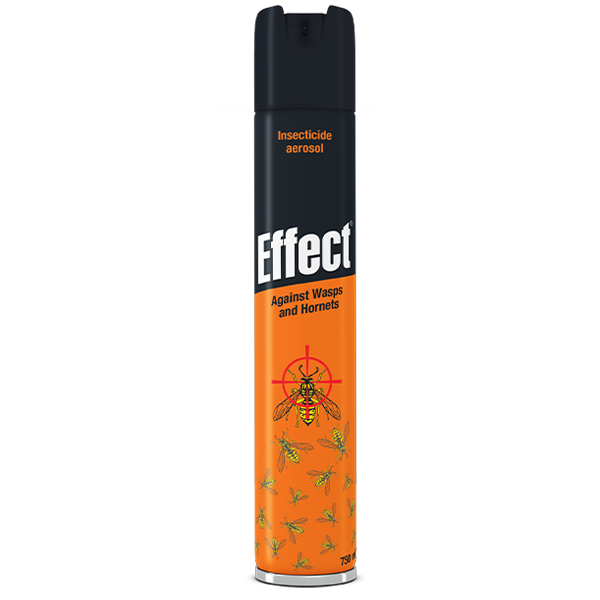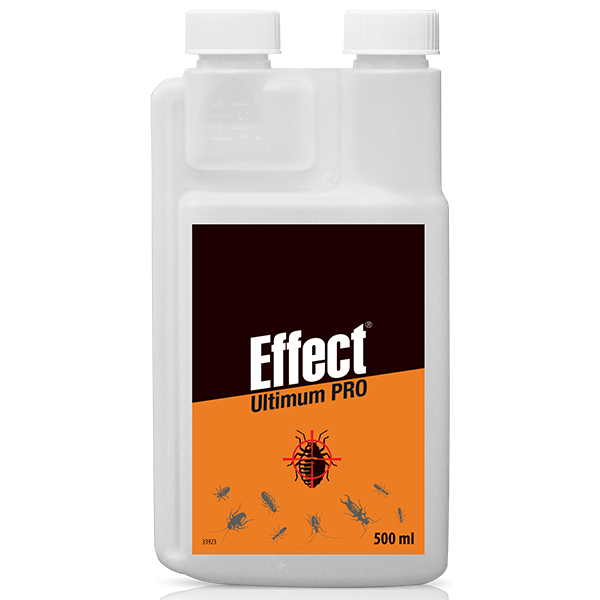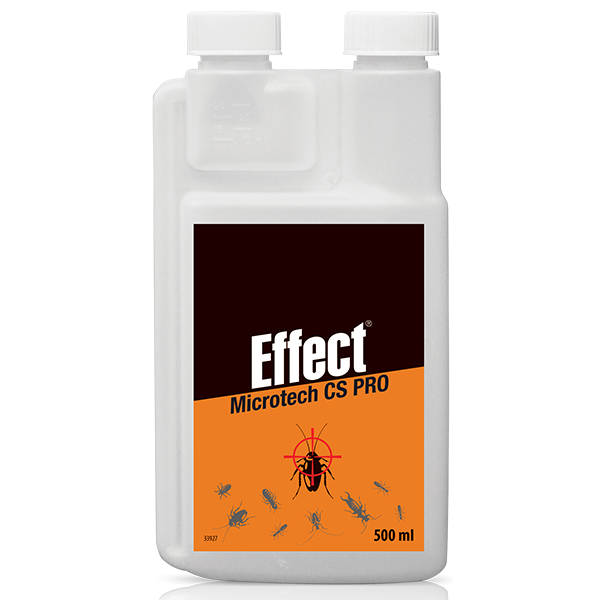Flying insects
Success depends on using the right product for the right insect. By using the right Effect® insecticides you’ll save yourself the trouble of having to do it over and over again.
House fly
Body & tail: Grey to black in colour, can measure up to 2,5 cm. The tail is hairless and longer than the body and head combined.
Living: Can be found living in the upper parts of buildings and in trees.
Diet: Omnivorous, eating around 30 g of food per day. Its diet consists mainly of cereals and fruits. Needs to drink daily, about 20 ml.
Life cycle: Living for up to 18 months, can produce up to 6 litters a year with 6-8 young per litter.
Registered Effect products for house flies:
Mosquito
Body & tail: From light brown to grey and even black. Measures up to 9 mm, the tail is semi-naked and longer than the head and body combined.
Living: indoors and outdoors.
Diet: Omnivores: seeds, cereals, fruits, vegetables, and meat. It can survive without water, gaining sufficient moisture from its food. Eating only small amounts at a time.
Life cycle: Living for 15-18 months, can produce up to 8 litters a year with 5-6 young per litter.
Registered Effect products for mosquitos:
Wasp
Body & tail: From light brown to grey and even black. Measures up to 5,5 cm, the tail is semi-naked and longer than the head and body combined.
Living: indoors and outdoors.
Diet: Omnivores: seeds, cereals, fruits, vegetables, and meat. It can survive without water, gaining sufficient moisture from its food. Eating only small amounts at a time.
Life cycle: Living for 15-18 months, can produce up to 8 litters a year with 5-6 young per litter.
Registered Effect products for wasps:
Moth
Body: Moths vary greatly in color, shape, and size with a wingspan from about 4 mm (0.16 inch) to nearly 30 cm (about 1 foot). In comparison to butterflies, most moths have stouter bodies, their wings, bodies, and legs are covered with dustlike scales and their coloring is duller. The most distinctive difference to butterflies is moths’ feathery or thick antennae.
Living: Moths are mostly nocturnal flying insects that belong to the Lepidoptera order with about 160,000 species and are extraordinarily diverse. They are highly adaptable and live in all continents except for polar habitats.
Diet: On one hand moths are beneficial insects as they pollinate plants and are highly nutritious food for birds, bats, and even people around the globe.
But on the other hand, they can be major agricultural pests. Moth caterpillars can cause extensive damage in field crops (eg. corn borers and bollworms), forests (gypsy moth), fruit farms (codling moth), and others. Larvae from the family Tineidae eat fabric from natural fibers such as wool or silk clothes and blankets.
Unlike their young most adult moths do not eat at all – some don’t even have mouthparts.
Life cycle: There are four stages in the metamorphosis of butterflies and moths: egg, larva (caterpillar), pupa, and adult. Adults do not live long and their sole purpose is usually to mate. A male moth can sense the female pheromones over a great distance. When mated the female will look for a place to lay her eggs – usually choosing somewhere with a lot of plant matter as a good food source for the larvae. In her lifetime one female can lay up to 400 eggs.
Before they hatch the eggs lay dormant for 4 to 10 days. Pupa or caterpillar maturing speed varies depending on the time of year, warmth, and amount of food but can grow from a few millimeters to a couple of cms. At the end of the stage moth, larvae make cocoons from which they emerge as fully grown moths with wings.
Registered Effect products for moths:
Hornet
Body: These insects are the largest of the social wasps belonging to the Vespa genus. Some of the fearsome-looking species can reach up to 5,5 cm (2.2 in) in length. The largest known hornet in the world is the Asian giant hornet (Vespa Mandarina).
They are mostly black with yellowish-orange markings on the face, thorax, and the tip of the abdomen. They have long and slender bodies with long legs.
Workers defend the hive with stingers but do not sting humans unless provoked. Male hornets are docile and do not have stingers.
Living: There are about 20 hornet species, most native to Asia. Europe, Africa, and North America are home to European hornets.
They like to build their nests in high areas such as treetops, hollow tree trunks, sheds, garages, under roofs, attics, and inside decking. Besides that, they can build their nests in enclosed spaces within fields, gardens, and parks.
Diet: Adult hornets eat tree sap, nectar, and sugar-rich plant foods and can be found on oak trees, rotting or overripe fruits, and other sugar-containing foodstuffs. They are also accomplished predators and hunt flies, bees, and other insects.
Life cycle: Hornets are social insects and build highly organized communal nests. Each nest has one queen, whose sole purpose is to lay eggs. She mates in autumn and survives the winter under tree barks, rotten wood, or soil. In spring she looks for a nesting place where she develops the eggs. She can lay 200 – 300 eggs per day. Each hornet completes the full metamorphosis from an egg, larvae, pupa to a full-grown wasp.
The queen is attended by workers who build and defend the nest and hunt for food. The colony can count from 5.000 to 10.000 insects.
Registered Effect products for wasps:




